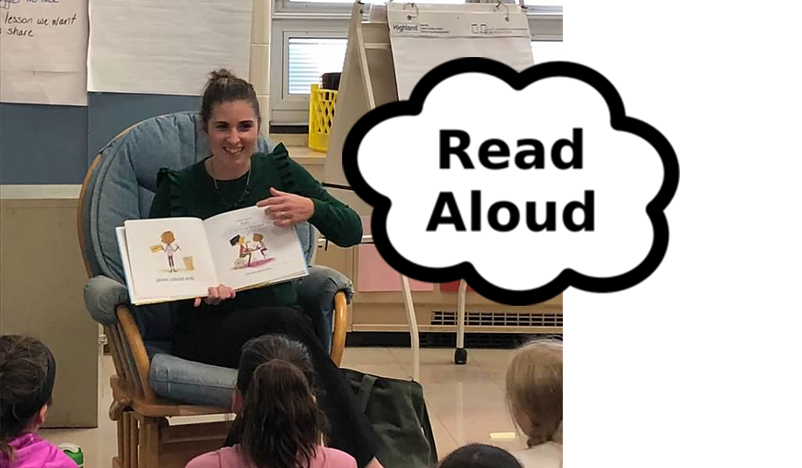This post was written by NCTE member Pam Koutrakos.
For those of us committed to read-aloud time every day, preparing for World Read Aloud Day and African American Read-In events can feel like prepping for the Academy Awards: instead of the pressure of deciding who to wear, our minds spin with ideas for who to read.
The good news is that this excitement does not need to end! We can recapture and continue this joy by reusing these fabulous texts again . . . and again . . . and again. Here are five ideas for revisiting WRAD and African American Read-In texts (or any text!) with specific attention to the instructional opportunities around words.
Reread with Our Writer’s Eyes
One favorite method of rereading asks the class to reread with a focus on the writer’s word choice and craft. Notice, appreciate, and think together about the “how” behind reactions and responses: How did Lisa Cline-Ransome help us to visualize that so clearly? How did Jason Reynolds make us feel every emotion alongside the main character? What words helped make this happen? How could we try this in our own writing?
Revisit a Small Part . . . Repeatedly
One favorite shared reading source is two side-by-side pages from a longer text (previously read aloud). Shared reading comprises several short-and-sweet instructional sessions. The first session often focuses on literal comprehension and the last on inferential comprehension and/or analytic thinking. The sessions in between focus on anything else that matches the goals of classroom learners. Look no further for word-themed shared reading options:
- Practice self-monitoring by noticing, decoding, and checking a new word found on the page.
- Choose a word that reflects a recently practiced word study pattern . . . and then generate other words with that pattern.
- Reread the text several times, practicing fluent and expressive reading, while also reading pattern words or rhyming words in different silly and fun voices.
- Challenge students to choose a word from the text, generate synonyms and antonyms of that word, and then create and debate a “word continuum” stretching from one extreme to the other.
Go On a Scavenger Hunt
A common word study goal is for students to notice learned patterns in texts and apply gained knowledge to accurately read these words without sacrificing fluency. Students or classes could reread WRAD or Read-In texts and go on a pattern/part scavenger hunt, perhaps using highlighting tape to denote found pattern words. Students might even use different colors to take things up a notch: highlighting short-a words in green and long-a words in yellow, or words with verb suffixes in blue and adjective suffixes in orange. Then, encourage rereading, spotlighting accuracy and fluency.
Get Inspired with a Mini Inquiry
Cycles of inquiry make for wonderful long-term learning, but single period mini inquiries are another way to incite active wondering in the classroom. To build word wondering, invite students to generate questions about words and the text, and then start rereading, discussing, discovering, debating, and sharing. How does the rhythm of Crown: An Ode to the Fresh Cut affect us as readers? How does Jacqueline Woodson’s poetic language match the colorfulness of the illustrations in The Day You Begin? How does Kwame Alexander’s word play and figurative language across books in the Crossover series help us get to know the characters
Discuss and Write a Response Together
Whether as part of a last session in a cycle of shared reading, as a share-out from a mini inquiry, or just as meaningful stand-alone work, classes might revisit a text and engage in discussion around a character, lesson, theme, takeaway, or comparison. Communities of learners could also cocreate a written response using interactive writing. While students offer ideas, the teacher records these ideas. When encountering a word with a studied or interesting part or pattern, students might share attempts at conventional spelling on slates. Then volunteers could write these targeted words on/into the class piece. Whether done traditionally on chart paper or digitally using Google Docs or a similar platform, the interactive nature allows the focus to be on ideas and words simultaneously.
The excitement and impact of African American Read-In events and World Read Aloud Day don’t need to end so quickly. These cherished texts can also live beyond these events, helping to build a classroom culture that is curious about and interested in words.
The fun, excitement, and impact of African American Read-In events and Word Read Aloud Day don’t need to end so quickly. These cherished texts can also live beyond these events, building a classroom culture that is curious about and interested in words. These are only a few of the many opportunities for continued learning. If you’d like, continue to share other ideas, tagging @NCTE and @PamKou.
 Pam Koutrakos is an educational consultant with Gravity Goldberg, LLC, where she works with students, teachers, and administrators PreK–grade 8. She recently published Word Study That Sticks: Best Practices K-6 (Corwin, 2018) and will soon be releasing The Word Study That Sticks Companion: Classroom-Ready Tools for Teachers and Students, K-6 (Corwin, 2019). Connect with her on Twitter @PamKou and LinkedIn.
Pam Koutrakos is an educational consultant with Gravity Goldberg, LLC, where she works with students, teachers, and administrators PreK–grade 8. She recently published Word Study That Sticks: Best Practices K-6 (Corwin, 2018) and will soon be releasing The Word Study That Sticks Companion: Classroom-Ready Tools for Teachers and Students, K-6 (Corwin, 2019). Connect with her on Twitter @PamKou and LinkedIn.

